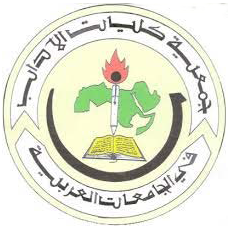Association of Arab Universities Journal for Arts مجلة اتحاد الجامعات العربية للآداب

Publication Ethics Statement
Peer review
Peer review is used to assess the quality of a manuscript before it is published. Independent researchers in the relevant research area assess submitted manuscripts for originality, validity and significance to help editors determine whether a manuscript should be published in their journal.
How does it work?
When a manuscript is submitted to a journal, it is assessed to see if it meets the criteria for submission. If it does, the editorial team will select potential peer reviewers within the field of research to peer-review the manuscript and make recommendations.
Type of Peer Review
Double-blind: the reviewers do not know the names of the authors, and the authors do not know who reviewed their manuscript.
Douple Blind Peer Review
The review process is an important aspect of the publication process of an article. It enables authors to improve their manuscripts and aids editors in making a decision on manuscripts. AAUJA employs a double-blind peer review system.
A double-blind peer review system is an anonymous review system whereby the identity of the author(s) of a manuscript is concealed from the selected reviewers. All details that may enable a reviewer to identify the author(s) of a manuscript are removed from the manuscript before the manuscript is sent to the reviewer. Similarly, the reviewers’ identities are also concealed from the author(s) when sending the reviewers’ comments to the author(s).
AAUJA considers the double-blind peer system as a more effective review system because it limits possible bias from either the selected reviewers or from authors.
Plagiarism
The editorial board does not accept any kind of plagiarism nor does it bear responsibility for any plagiarism detected in the articles submitted to the journal. Therefore, all researchers who submit their research papers to the journal must confirm that their papers are their own writing and have not been copied, in whole or in part, from other research papers. The authors should cite the works cited in their papers properly and list all the works cited in the paper in the works-cited page. The journal checks all research papers submitted to the journal to ensure that they are free of plagiarized texts and duplicate copies by using anti-plagiarism software. Moreover, all reviewers are required to report any plagiarism related to the submitted research paper and in case any violations of such ethical principles are discovered, the research paper will be immediately rejected and no submission by the author will be accepted for even consideration in the future. Furthermore, if some readers or reviewers raise some issues related to plagiarism in the research paper, the Editor-in-Chief contacts all researchers so they send him/her reports regarding this concern. In case their responses confirm such doubts about plagiarism, the Editor-in-Chief escalates this issue at the institutional level by contacting the president of the university or the head of the institution responsible for the researcher. If the published research paper is found to be a duplicate copy, a note of withdrawal is to be sent and copies of correspondence are to be sent to the head of the institution responsible for the researchers. Withdrawn papers should be kept as copies of evidence and prominently marked as “Withdrawal” in all electronic copies to inform any future readers of this unacademic and unethical issue.
Disclaimer
The opinions expressed in the journal are those of the authors’ and don’t necessarily reflect the opinion of the editorial board nor the scientific Society for the faculties of Arts in the Arab World.
Evaluation and Edits
Once the research paper has been submitted to the journal, the author will be notified of this submission. All research papers submitted to the journal are initially reviewed by the editorial board. The editorial board may reject the article before sending it to external reviewers if they deem it weak or not compliant with the journal’s publication rules. In case the research paper seems to be suitable for publication, the Editor-in-Chief selects two experienced reviewers (experts in the field of the research paper) to evaluate the paper and write a detailed report based on the “Scientific Research Evaluation Sheet” approved by the journal. The reviewers are required to provide a clear recommendation: Accept, Reject, Accept with major revision, Accept with minor revision.

